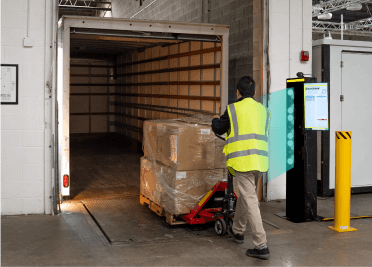Tracking Your Products
Traceability has become increasingly critical in manufacturing, where parts and products must be traced through manufacturing processes for better visibility and regulatory compliance.
One of the best ways to achieve traceability is Direct Part Marking, or DPM. By directly marking parts and products, companies can accurately trace them throughout their manufacturing processes and even their entire life cycle.
There are several ways to apply DPMs:
- Dot peen (repeated precise-location impinging with a sharp tool)
- Laser etching
- Ink marking
- Chemical etching
- Inkjet molding
- Thermal spraying
These methods are commonly used in automotive, aerospace, medical device and military/defense manufacturing for a number of key reasons:
- Traditional part labels may not withstand environment conditions where a finished product will be used.
- Many parts are simply too small for barcode labels.
- Equipment such as automotive components, industrial pumps and medical devices may not be a good fit for traditional labeling.
- Hard surfaces such as metal and glass can be problematic for long-term label adhesion.
- Barcode labels may not endure and adhere long-term when applied to softer and more pliable materials such as plastics, leather and rubber.
These and other challenges are good reasons to consider using DPMs, which can be scanned and tracked using barcode tracking technology.
DPMs can be scanned with the latest barcode scanners, such as Zebra’s 3600 Ultra-Rugged Series industrial scanners and TC8300 hybrid touch screen mobile computer and tilt-free barcode scanner. This means you can still use and scan barcode labels in other areas of your manufacturing, warehousing and logistics processes, and you can use the same scanning devices to also scan DPMs.
Additionally, implementing a DPM program provides several other major business benefits:
- DPMs provide a unique, permanent identifier that allows parts and products to be scanned and traced throughout their entire life cycle.
- DPMs enable tracking of part and product histories for regulatory compliance, which can reduce your chances of fines or penalties for non-compliance.
- DPMs allow you to quickly and accurately identify root causes of product failure or defects in the event of a recall or litigation. This alone can potentially save millions of dollars in lost revenue and help protect your brand.
- Quality is increasingly important in manufacturing and building a trusted brand, particularly with media coverage, online review, and social media making it far easier for customers and consumers to share their experiences with products. DPMs help enable better quality processes, tracking, and quarantines for potential defects and issues.
- Tracking parts with DPM scanning technology is much more reliable and efficient than using paper records.
Fortunately, achieving these benefits is easier and more affordable than ever before, thanks to the emergence of newer barcode scanning technologies and a timely trade-in program from our partner, Zebra Technologies.
Zebra has an entire portfolio of technologies for DPM scanning, 1D/2D barcode scanning, document capture, and mobile computing—depending on the device and model you choose.
One of our top recommendations is Zebra’s MC9300 gun-style touch screen handheld mobile computer with a built-in scanner.
In all, there are several device types and form factors you can choose from, and with the GO Zebra trade-in program, you can get significant savings on each device when you trade in qualifying legacy devices and upgrade to Zebra’s latest mobile solutions.










